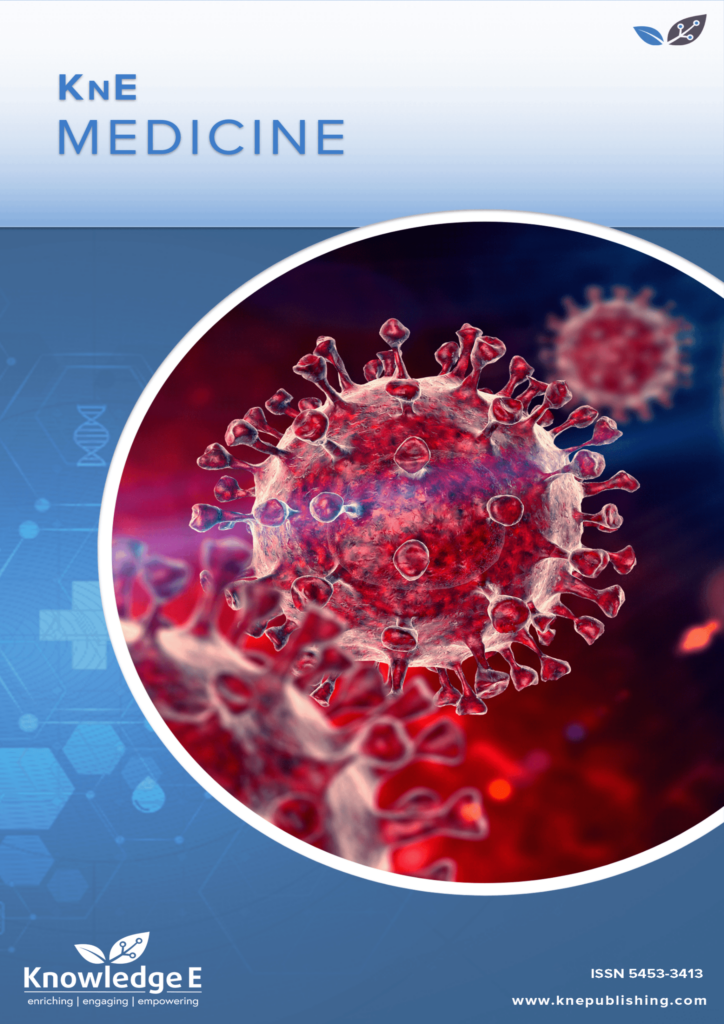
KnE Medicine
ISSN: 2519-125X
The latest conference proceedings on all fields of medicine.
Success Rate of Pregnancy after PESA/TESE and ICSI in Jakarta
Published date: Oct 04 2016
Journal Title: KnE Medicine
Issue title: The 6th Congress of the Asia Pacific Initiative on Reproduction (ASPIRE 2016)
Pages: 133-139
Authors:
Abstract:
Male infertility is a major problem in infertility. It can be caused by obstructive azoospermia. Sperm retrieval surgery (SRS) is the best approach to gain the sperm used Intra Cystoplasmic Sperm Injection (ICSI). However, the success rate of pregnancy after SRS and ICSI in Cipto Mangunkusumo National Hospital has not yet been defined. There were 123 patients had SRS with most of them performed PESA. Sperm were found in more than 77% of patients with most of them directly performed ICSI. Only 40 patients could be contacted with average age of husband, wife, and duration of marriage were 40.3 + 8.2, 33.2 + 5.1, 7.6 + 4.6 years old respectively. Most of patients were suffered from primary infertility. The success rate of pregnancy is 72.5%, with success rate of birth is 30.0%. There are 2 patients waiting for delivery date. Sperm retrieval surgery such as PESA/TESE is the best approach to gain sperm in obstructive azoospermia patient. The success rate of pregnancy after PESA/TESE and ICSI is high with almost half of patients have succeed in giving birth.
References:
[1] A. Mendeley, Definitions Of Infertility And Recurrent Pregnancy Loss: A Committee Opinion, Fertil Steril, 99, no. 1, p. 63, (2013).
[2] S. O. Rutstein and I. H. Shah, Infertility, And Childlessness In Developing Countries, DHS Comparative Reports 9. DHS Comp Reports, 9, 13–50, (2004).
[3] T. Bushnik, J. L. Cook, A. A. Yuzpe, S. Tough, and J. Collins, Estimating the prevalence of infertility in Canada, Human Reproduction, 27, no. 3, 738–746, (2012).
[13] S. K. H. Ashour and P. S. R. Murthy, Testicular sperm retrieval for assisted reproductive techniques, Reviews in Gynaecological Practice, 4, no. 2, 105–110, (2004).
[14] S. Kahraman, S. Özgür, C. Alataş, S. Aksoy, M. Taşdemir, A. Nuholu, I. Taşdemir, B. Balaban, K. Biberolu, R. Schoysman, M. Nijs, and P. Vanderzwalmen, Fertility with testicular sperm extraction and intracytoplasmic sperm injection in non-obstructive azoospermic men, Human Reproduction, 11, no. 4, 756–760, (1996).
[15] V. Vloeberghs, G. Verheyen, P. Haentjens, A. Goossens, N. P. Polyzos, and H. Tournaye, How successful is TESE-ICSI in couples with non-obstructive azoospermia? Human Reproduction, 30, no. 8, 1790–1796, (2015).
[16] S. C. Esteves, Percutaneous epididymal sperm aspiration as a method for sperm retrieval in men with obstructive azoospermia seeking fertility: Operative and laboratory aspects, International Braz J Urol, 41, no. 4, p. 817, (2015).
[17] P. Devroey, J. Liu, Z. Nagy, A. Goossens, H. Tournaye, M. Camus, A. Van Steirteghem, and S. Silber, Pregnancies after testicular sperm extraction and intracytoplasmic sperm injection in non-obstructive azoospermia, Human Reproduction, 10, no. 6, 1457–1460, (1995).
[18] DJ. Noorhasan, PG. Mcgovern, M. Cho, A. Seungdamrong, K. Ahmad, and DH. Mcculloh, Serum Hcg Levels Following The Ovulatory Injection: Associations With Patient Weight And Implantation Time, Obstet Gynecol Int [Internet], 2015, no. 1, (2015)., Article ID 520714
[4] O. S. Philippov, A. A. Radionchenko, V. P. Bolotova, N. I. Voronovskaya, and T. V. Potemkina, Estimation of the prevalence and causes of infertility in Western Siberia, Bulletin of the World Health Organization, 76, no. 2, 183–187, (1998).
[5] Y. Che and J. Cleland, Infertility in Shanghai: Prevalence, treatment seeking and impact, Journal of Obstetrics and Gynaecology, 22, no. 6, 643–648, (2002).
[6] M. G. R. Hull, C. M. A. Glazener, N. J. Kelly, D. I. Conway, P. A. Foster, R. A. Hinton, C. Coulson, P. A. Lambert, E. M. Watt, and K. M. Desai, Population study of causes, treatment, and outcome of infertility, British Medical Journal, 291, no. 6510, 1693– 1697, (1985).
[7] P. C. Steptoe and R. G. Edwards, Birth after the reimplantation of a human embryo, Archives of Pathology and Laboratory Medicine, 116, no. 4, p. 321, (1992).
[8] G. Palermo, H. Joris, P. Devroey, and A. C. Van Steirteghem, Pregnancies after intracytoplasmic injection of single spermatozoon into an oocyte, The Lancet, 340, no. 8810, 17–18, (1992).
[9] T. Practice and R. Medicine, Sperm Retrieval For Obstructive Azoospermia, Fertil Steril [Internet], American Society For Reproductive Medicine, 90(5 suppl.), 213– 8, (2008)., Available from: http://dx.doi.org/10.1016/J.Fertnstert.2008.08. 047.
[10] B. Hollingsworth, A. Harris, and D. Mortimer, The cost effectiveness of intracyctoplasmic sperm injection (ICSI), Journal of Assisted Reproduction and Genetics, 24, no. 12, 571–577, (2007).
[11] T. Stalf, H.-C. Schuppe, R. Henkel, W. Weidner, W.-B. Schill, H.-R. Tinneberg, and H. Gips, Limitations for ICSI, MESA, TESE? - experiences from the IVF centre in Giessen., Andrologia, 35, no. 3, 181–183, (2003).
[12] K. Osmanagaoglu, V. Vernaeve, E. Kolibianakis, H. Tournaye, M. Camus, A. Van Steirteghem, and P. Devroey, Cumulative delivery rates after ICSI treatment cycles with freshly retrieved testicular sperm: A 7-year follow-up study, Human Reproduction, 18, no. 9, 1836–1840, (2003).